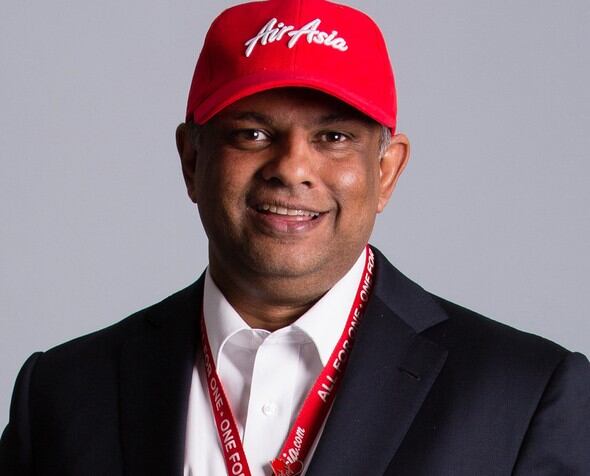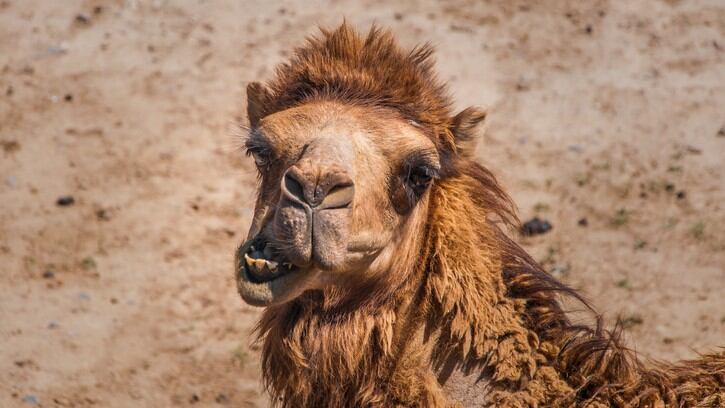Flight of fancy
Quite reasonably, many people would rather flirt with starvation than eat budget airline food that is guaranteed to be either frozen in the middle or so blazing hot that it blisters the roof of your mouth.
So hats (including baseball caps) off to Air Asia CEO Tony Fernandes, who is now enticing presumably half-baked consumers to eat it while they are on solid ground too.

The Malaysian entrepreneur recently opened Santan in a Kuala Lumpur mega mall – a fast-food restaurant that serves aeroplane food in cardboard boxes.
Dishes include ‘Pak Nasser’s Nasi Lemak’, ‘Uncle Chin’s Chicken Rice’ and Vietnamese Chicken Pho.
“A year ago, when I first conjured the idea of turning our in-flight food choices into a fast-food restaurant, everyone thought I was crazy,” said Fernandes, clearly convinced that nobody still does.
But, as he quite rightly adds, people also thought he was a sandwich short of a meal deal when he “started an airline. And look how that turned out!”
Let’s be generous and ignore the carrier’s lukewarm recent financial performance and instead keep tabs on how his ambition to open 100 outlets across the globe pans out, including one in New York’s Times Square.
Until then, I’m keen to know if the restaurant will take the airline’s lead and generously allow us to fork out extra cash to jump the queue, or to have the pleasure of a seat where our kneecaps aren’t pressed against our chins?
Getting the hump
The annual Whole Foods list of next-big-things always secures masses of media coverage, and the 2020 edition was no different.
This year the retailer is extolling the virtues of ‘blended meat products’ (that's burgers with some added veggies, to you and me), cauliflower flour, tiger nuts and, the next hipster fad, West African ingredients such as sorghum and fonio.
However, two India-based foodies we recently spoke with were spitting mad about the ‘limited’ mainstream media coverage of camel milk’s ‘move into the mainstream’.
They say SMEs in the country are reporting 30-40% year-on-year growth, while we recently reported that Chinese e-commerce giants Tmall saw sales of camel milk powder unexpectedly rocket in the last 12 months.
Meanwhile, the number crunchers tell us that the market as a whole is tipped to top US$8 billion by 2024.
Our aforementioned contacts insist the health, taste and nutritional benefits of camel milk are extensive and are now expecting it to take off across APAC.
In fact, they say its beneficial properties might only be topped by, and don’t kick the messenger, donkey milk.
Alas, the latter’s sector is apparently hampered by a lack of infrastructure and limited shelf life, which requires some donkey owners to take the animals directly to individual customers to ensure a fresh delivery.
Camel it is, then. One hump or two in your cuppa?
Eyes on the price
The US website of French fashion mag L’Officiel this week revealed a raft of beauty products that cost an arm and a leg, but are apparently ‘actually worth it’.
Alongside a hyaluronic acid-based filler at $1450 and a $1500 ‘vampire facial’, sits a new skin care package by Nobel Prize-winning chemist Sir Fraser Stoddard, which is a snip at just $849 for all four products. Hang on, that's $849 a month, adds the article.
So just a smidgen over $10,000 a year, then.
Noble Panacea’s Brilliant Collection, claims the site, ‘inevitably leads to perfect skin’.
Here’s hoping it will also obliterate the inevitable eye bags as sleep deprived customers fret about affording the next month’s supply.
Gary Scattergood is Editor-in-Chief of FoodNavigator-Asia, NutraIngredients-Asia and CosmeticsDesign-Asia.



